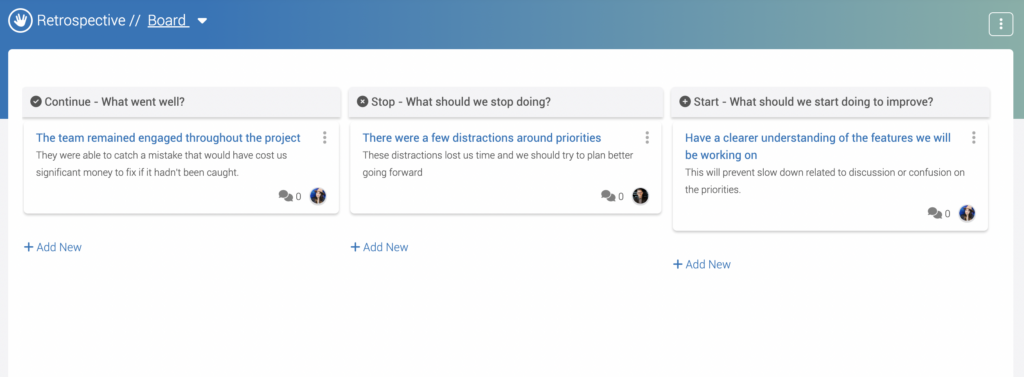Are You an X or a Y When It Comes to Your Leadership Style?

Leaders must evolve beyond being managers seeking incremental improvement to become visionaries with the courage to craft a resonant purpose and boldly imagine and pursue the future. Leadership is a dynamic and multifaceted concept and there are countless approaches and theories to guide us in understanding and practicing effective leadership.
McKinsey
Estimated reading time: 15 minutes
Among these theories, two prominent ones stand out: Theory X and Theory Y. These theories, developed by Douglas McGregor in the 1960s, provide contrasting perspectives on how leaders should view and manage their teams.
In this article, we’ll delve into the key differences between Theory X and Theory Y leadership styles, explore the challenges associated with each, and invite you to reflect on your own leadership approach.
So, are you an X or a Y when it comes to leadership? Let’s find out.
Why do leadership styles matter?
But first… why does your leadership style matter and who cares?
Leadership style matters because, quite simply, it is the life blood of the organization, its culture, and the morale of the team members. The way a leader approaches their role and interacts with their team has far-reaching consequences, both positive and negative. It can be the driving reason people both join a company and even… leave one.
Here are several reasons why leadership style is critically important:
Employee Morale and Engagement: Different leadership styles can either boost or diminish employee morale and engagement. A supportive and empowering leadership style, such as Theory Y, tends to foster higher morale, job satisfaction, and enthusiasm among team members. Conversely, an authoritarian or controlling bureaucratic leadership style, like Theory X, can lead to lower morale and disengagement.

In fact, one survey reported that 46% of respondents wanted to quit their jobs and 81% of managers wanted to quit because of their own management.
We could all stand to feel a little more like this picture when we go to work.
Employee Performance: Leadership style significantly influences employee performance. A leader who provides clear direction, constructive feedback, and support tends to inspire higher levels of productivity and performance in their team members. Good leadership just leads to better productivity.
Innovation and Creativity: Different leadership styles can either foster or hinder innovation and creativity within an organization. A leadership style that encourages risk-taking, idea-sharing, and experimentation is more likely to lead to innovative solutions and continuous improvement.
Adaptability and Resilience: Leadership style plays a role in an organization’s ability to adapt to change and navigate challenges. Leaders who are flexible, adaptable, and open to new ideas are better equipped to guide their teams through uncertain times.
Ethical Behavior: Leadership style can impact ethical behavior within an organization. Ethical leaders who lead by example and prioritize integrity tend to foster a culture of ethics and compliance.
Long-Term Organizational Success: Ultimately, leadership style can significantly impact an organization’s long-term success. Effective leadership can drive growth, profitability, and sustainability, while poor leadership can lead to stagnation or decline. It contributes to a healthy team dynamic.
What business owner doesn’t want a more successful company?
The value of a strong leader, one with an effective management style, is nothing short of impactful. If a manager fails to lead correctly, consider what the inverse of all of the above is.
Running a business is already an uphill battle. This can’t be neglected.

Back to X & Y…
The X & Y theories are fundamentally contrasted approaches to managing direct reports. They start with different premises and assumptions about the people that work for them and, as a result, manage in the way that they believe people will respond to.
The right leadership style will look different for each person but it’s the understanding, researching and practice that helps you get there.
Theory X: The Traditional Approach for Autocratic Leaders
Theory X represents a traditional and authoritarian leadership approach. Leaders who align with Theory X tend to believe that most people inherently dislike work, lack ambition, avoid responsibility, and need constant supervision. Consequently, they take a more controlling and directive role in managing their teams. They often set strict rules, closely monitor performance, and rely on punishments and rewards to motivate their employees.
What does an X management style look like?
Here’s what a manager with a Theory X leadership style typically looks like:
Authoritarian Control
Theory X managers tend to exercise a high degree of control over their team. They often make decisions unilaterally and expect employees to follow orders without question.
Distrust of Employees
They may have a fundamental distrust of their employees’ abilities and motivations. This can lead to a belief that employees need constant supervision and that they will not work unless closely monitored.
Strict Rules and Procedures
Theory X managers often establish rigid rules, policies, and procedures to govern the workplace. They may prioritize compliance over flexibility.
Micromanagement
These managers are prone to micromanagement, closely monitoring every aspect of their employees’ work. They may frequently check in on progress and demand frequent reports.
Limited Employee Involvement
They are less likely to involve employees in decision-making processes or seek their input on important matters, as they believe employees lack the capability to contribute meaningfully.
Short-Term Focus
Theory X managers may have a short-term perspective, primarily concerned with immediate results rather than long-term employee development or job satisfaction.
Resistance to Change
They may resist changes in the workplace and view new ideas or approaches with skepticism, as they prefer to maintain the status quo.
A manager with a Theory X sense of leadership typically exhibits a top-down, command-and-control approach to management. While this style may have its merits in certain situations, it can also lead to challenges such as low employee morale, limited creativity, and high turnover.
Many modern organizations are moving away from this approach in favor of more employee-centered leadership styles like Theory Y, which focus on trust, collaboration, and long-term employee development.
Challenges of Theory X Leadership
- Limited Creativity: Theory X leaders may stifle creativity and innovation within their teams because they tend to micromanage and discourage independent thinking.
- Low Morale: Employees working under a Theory X leader may experience lower job satisfaction and morale due to the strict and authoritarian work environment.
- High Turnover: Constant supervision and a lack of trust in employees can lead to high turnover rates, as talented individuals may seek more supportive and empowering work environments.
Theory Y: The Progressive Approach
On the flip side, Theory Y presents a more progressive and employee-centered approach to leadership. Leaders who align with Theory Y view work as a natural part of life and believe that people can find enjoyment and satisfaction in their jobs when given the right conditions. They trust their employees, encourage autonomy, and see their role as facilitators rather than controllers.
What does a Y management style look like?
A manager with a Theory Y sense of leadership embodies several key characteristics and behaviors that reflect a more employee-centered and progressive approach to leadership. Here’s what a manager with a Theory Y leadership style typically looks like:
Trust in Employees
A Theory Y manager has trust and confidence in their team’s abilities. They believe that employees are capable of taking on responsibilities, making decisions, and contributing positively to the organization.
Empowerment
They empower their team members by granting them autonomy and decision-making authority. Instead of micromanaging, they encourage employees to find their own solutions to problems and take ownership of their work. Their approach tends to be one of participative and democratic leadership.
Open Communication
Theory Y leaders foster open and transparent communication. They encourage feedback, listen actively to their team’s ideas and concerns, and create an environment where everyone feels comfortable sharing their thoughts. Creating this open environment can encourage collaboration and an improved sense of company culture.
Supportive Mentoring
These managers act as coaching leaders rather than dictators. They provide guidance, coaching leadership and support to help employees grow, develop their skills, and reach their full potential.
Positive Work Environment
They focus on creating a positive and inclusive work environment where employees feel valued, respected, and motivated. This often includes recognizing and celebrating individual and team achievements.

Flexibility
Theory Y managers are adaptable and flexible in their approach. They understand that different employees have unique needs and may require varying levels of support and guidance.
Long-term Perspective
They take a long-term view of their team’s development and performance, understanding that investing in employee growth and job satisfaction can lead to better outcomes over time.
Conflict Resolution
When conflicts arise, Theory Y managers seek to resolve them through constructive dialogue and mediation rather than resorting to punishment or rigid discipline.
Focus on Intrinsic Motivation
They recognize that employees are often driven by intrinsic motivation, such as a sense of purpose, personal growth, and the satisfaction of doing meaningful work. Theory Y managers tap into these motivations to inspire their teams.
Encouragement of Innovation
These leaders promote a culture of innovation and creativity. They encourage employees to explore new ideas, take calculated risks, and contribute to the organization’s continuous improvement.
Balancing Work and Life
They acknowledge the importance of work-life balance and support their team members in achieving it. This can include offering flexible work arrangements and understanding personal commitments.
In summary, a manager with a Theory Y sense of leadership is characterized by a belief in the potential of their employees, a focus on creating a positive and empowering work environment, and a commitment to fostering personal and professional growth. This leadership style can lead to increased employee satisfaction, motivation, and productivity, ultimately benefiting both the individuals and the organization as a whole.
Challenges of Theory Y Leadership
- Lack of Structure: While Theory Y leaders promote autonomy and creativity, some employees may require more structure and guidance, which can be challenging to balance.
- Overlooking Performance Issues: In some cases, a Theory Y leader’s trust and hands-off approach may lead to overlooking performance issues that require intervention.
- Resistance to Change: Employees used to a Theory X environment may initially resist a Theory Y leadership style, as it can take time to adapt to increased freedom and responsibility.
Finding Your Leadership Style
Now that we’ve explored the fundamental differences between Theory X and Theory Y leadership, it’s essential to recognize that leadership isn’t a one-size-fits-all concept. There is no one best leadership style — and what one leader finds as the most effective leadership style may not be the same as someone else. Successful leaders often combine elements from both theories, adapting their approach to different situations and team dynamics.
The key is in striking a balance between control and empowerment, recognizing when to provide guidance and when to step back. Effective leadership involves understanding your team’s needs, fostering a positive work environment, and ultimately achieving the best outcomes for both the organization and its employees.
No one sets out to be a “bad manager”
Unfortunately, there is often this thought that people are intentionally mean and inconsiderate — the reality is that no one wakes up and says to themselves, “I’m going to be a bad and ineffective boss today.”
In today’s dynamic business landscape, the reality is that people are pinched. We’ve spent the last three years sandwiched in COVID, inflation is wild-fire, and the push to do more and more with less is real. Business leader aren’t given the coaching that they need to be an effective leader. Both these internal and external conditions place strain on team members, the organizational culture, and make it hard to set clear expectations.
Here at Leantime, though, we believe that technology exists to make the human side of leadership, expectation management, and communication easier and that artificial intelligence (AI) is going to enable us to do that even better.
Leantime is built for the Y leader ready to share their visionary style
Leantime is a project management and collaboration tool that is built with the Theory Y leadership principles of employee-centered, progressive leadership.
Empowerment and Autonomy: Leantime promotes empowerment and autonomy among team members. By giving the team insights into the vision and purpose, the team can then take that and shape it into what it means for their specific work area. It allows individuals to collaborate effectively without the need for constant oversight. This aligns with Theory Y, which emphasizes trust in employees’ abilities.
Transparency and Open Communication: Leantime provides a platform for transparent and open communication within teams. Theory Y leaders encourage feedback and active communication, and Leantime’s features, such as task comments, file sharing, and progress tracking, facilitate this collaborative environment.

Flexibility and Adaptability: Leantime is adaptable to various project management methodologies, making it suitable for teams with diverse needs and preferences. Theory Y leaders recognize the importance of flexibility, and our hybrid approach to work management and cognitive accessibility allow teams to work in ways that suit their unique requirements.
Positive Work Environment: Theory Y leaders focus on creating a positive work environment where team members feel valued and motivated. Leantime’s user-friendly interface, intuitive features, and emphasis on collaboration contribute to a positive user experience, which can boost morale and productivity.
Recognition and Reward: Focusing on intrinsic motivation principles and dopamine boosting, Leantime includes features for aligning the team with the work and the outcomes. We present opportunities of ownership to the employee so they can get what they need on the way to the grand vision. This aligns with the Theory Y principle that employees are motivated by intrinsic factors such as recognition and personal growth.
Efficiency and Productivity: Leantime’s tools for task management, project tracking, and performance analytics help teams work more efficiently and productively. Theory Y leaders seek to optimize employee performance and support their growth, which Leantime facilitates through its productivity-focused features.
We do this through looking at what boosts dopamine and in creating features that help us work in a way that’s best for us — whether that’s the ability to start a timer in the tool, collect and create status reports automatically, or rating how you feel about a task and getting recommendations on where to start.
Conflict Resolution: By incorporating Retrospectives into Leantime, we’ve created room for the habitual process of talking about what went well, what didn’t and what could be improved on. This approach is in line with Theory Y, which encourages conflict resolution through open dialogue rather than punitive measures.

In summary, Leantime is designed to support leadership styles that prioritize trust, collaboration, and employee well-being, making it a valuable tool for Theory Y leaders. By providing a platform that fosters empowerment, open communication, and efficiency, Leantime enables teams to thrive under the guidance of visionary leaders, who embrace Theory Y principles.
Other types of leadership and management styles
Leadership is a multifaceted concept with various styles that can significantly impact an organization’s culture and performance. While Theory X and Theory Y, as discussed earlier, represent contrasting approaches to leadership, there are several other leadership styles worth exploring. In this article, we’ll summarize the top five other leadership styles: transformational leadership, transactional leadership, laissez-faire leadership, autocratic leaders, servant leadership, and situational leadership.

Let’s go over some of the other common leadership styles.
Transformational Leadership
Transformational leadership is a style that aims to inspire and motivate employees to achieve exceptional results and personal growth. Transformational leaders tend to lead by example, setting high standards and encouraging innovation and creativity. They often have a clear vision and can articulate it effectively to inspire their team. Key traits of transformational leaders include charisma, intellectual stimulation, individualized consideration, and inspirational motivation.
Benefits: Transformational leadership can lead to increased employee motivation, creativity, and commitment. It is especially effective during periods of change or when organizations need to adapt quickly to new challenges.
Challenges: Some employees may struggle to keep up with the high expectations of a transformational leader, and maintaining the high level of inspiration over the long term can be challenging.
Transactional Leadership
Transactional leadership is based on a clear system of rewards and punishments. Leaders use a “transactional” approach, offering rewards for desired behaviors and applying penalties for undesired actions. This style is highly structured and focuses on maintaining order and compliance within the organization.
Benefits: Transactional leadership can be effective in organizations where strict adherence to rules and procedures is critical, such as in regulatory or compliance-driven industries.
Challenges: It may stifle creativity and intrinsic motivation in employees. This style might not be well-suited for dynamic or innovative environments.
Laissez-Faire Leadership
Laissez-faire leadership is characterized by a hands-off approach, where leaders provide minimal guidance or direction to their team members. Instead, they trust employees to make decisions independently. This leadership style is most effective when team members are highly skilled, experienced, and self-motivated.
Benefits: Laissez-faire leadership can promote autonomy and creativity among employees, allowing them to take ownership of their work and find their solutions.
Challenges: In the absence of clear guidance, some employees may struggle with uncertainty, leading to decreased productivity and accountability.
Servant Leadership
Servant leadership is a style that places the leader in a role of service to their team. These leaders prioritize the needs of their employees, aiming to support their personal and professional growth. They focus on empathy, active listening, and a commitment to the well-being of their team members.
Benefits: Servant leadership fosters a positive and supportive work environment, leading to increased employee satisfaction, loyalty, and engagement.
Challenges: Balancing the needs of the team with organizational goals can be a delicate task for servant leaders. In some situations, this servant leadership style may be perceived as too passive.
Situational Leadership
Situational leadership is adaptive and flexible, emphasizing that leadership style should vary depending on the specific situation and the readiness level of employees. Leaders assess the needs and capabilities of their team members and adjust their leadership approach accordingly. This style can range from more directive to more supportive as needed.
Benefits: Situational leadership allows leaders to tailor their approach to the unique needs of their team and the demands of the situation, increasing the likelihood of success.
Challenges: It requires a deep understanding of both leadership styles and the ability to adapt quickly to changing circumstances, which can be challenging for some leaders.
Conclusion
So, are you an X or a Y when it comes to leadership? While it’s beneficial to understand the principles behind Theory X and Theory Y, the most effective leaders recognize the value in embracing both approaches when appropriate. Leadership is not a static concept; it evolves with time, experience, and the unique challenges each team faces. By being adaptable and open to change, you can become a more versatile and successful leader, ultimately achieving better results and fostering a positive work culture within your organization. And there are tools, like Leantime, to help you do it along the way.




